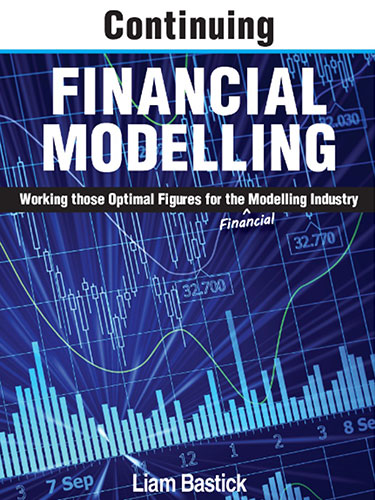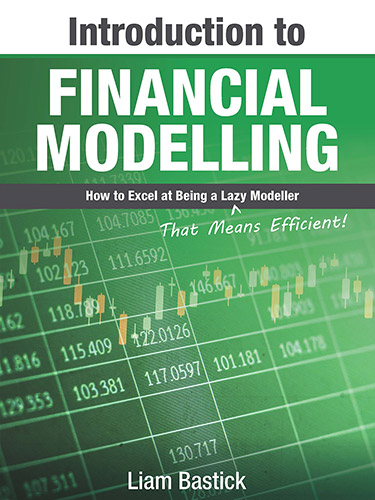Continuing Financial Modelling
November 2020

Working Those Optimal Figures for the Modelling Industry (Financial Modelling)
Dr. Liam Bastick’s sequel to Introduction to Financial Modelling.
Add to Cart: $14.99 »- 402 Pages
- Publisher: Holy Macro! Books
- ISBN: 978-1-61547-068-6
- PDF ISBN: 978-1-61547-152-2
IT’S JUST LIKE WAITING FOR A BUS.
You wait for one decent Financial Modelling book to come out and then two come along at once. This edition is aimed at those who wish to advance their knowledge and expertise in financial modelling by addressing common problems that occur day to day in the world of business / decision analyses, forecasting, and valuations. Building on the sister book, An Introduction to Financial Modelling, this volume begins where the other ends, considering typical issues and traps in cashflow forecasting, inventory modelling, depreciation calculations, debt sculpting, rolling budgets / charts, and valuation construction, to name just a few relevant topics.
This is not so much the sequel to Liam’s first sortie into the world of financial modelling, as the continuing reconnaissance mission. This book continues the theme of pragmatic – not theoretical – tips, tricks and ideas about how to build a financial model, with over 40 large scale and numerous smaller Excel examples.
Delivered in Liam’s inimitable style, be warned: the humour remains terrible. Find out why so many readers have said, “Oh, I wish I had kept the receipt”.
- Chapter 0: Not an Introduction, But a Continuation
-
Chapter 1: Recap
- 1.1: Best Practice Concept
- 1.2: Time Series Analysis
- 1.3: Financial Statement Theory
- 1.4: Control Accounts
-
Chapter 2: What-If? Analysis
- 2.1: Conditional Formulae
- 2.2: Offset
- 2.3: Scenario Analysis
- 2.4: Data Tables
- 2.5: Index and Match
- 2.6: Using Tornado Charts for Sensitivity Analysis
- 2.7: Simulations Analysis
- 2.8: Variance Analysis
- 2.9: Breakeven Analysis
-
Chapter 3: Forecasting Considerations
- 3.1: Seasonal / Cyclical Forecasting
- 3.2: Revising Forecasts
- 3.3: Pro-Rating Forecasts Over Time
- 3.4: Changing Periodicities
- 3.5: Modelling Historical, Actual and Forecast Data
- 3.6: Rolling Budgets and Charts
- 3.7: Forecasting Maximum Cash Required
- Chapter 4: Modelling Inventory
- Chapter 5: Capital Expenditure
-
Chapter 6: Debt
- 6.1: Debt Sculpting
- 6.2: Calculating Interest Rates Correctly
- 6.3: Useful Repayment Functions and Formulae
-
Chapter 7: Valuation Considerations
- 7.1: Deriving the Correct Cash Flow For DCF
- 7.2: Considering Discount Factors
- 7.3: Common DCF Modelling Errors
- 7.4: Using the Dividend Discount Model
- 7.5: Irrelevant IRR
- 7.6: Modified Internal Rate of Return (MIRR)
- 7.7: Smoothing Capital Expenditure
- 7.8: Calculating Economic Lives
- Chapter 8: Linking Models
-
Chapter 9: Life’s Too Short
- 9.1: Section Numbering
- 9.2: US vs. European Dates
- 9.3: Sheet Referencing
- 9.4: Reducing File Size
- 9.5: Taking It to the Limit
- 9.6: Order of Operations
- 9.7: Keeping Styles Under Control
- 9.8: Wearing Protection
-
Chapter 10: Look To The Future
- 10.1: Dynamic Arrays
- 10.2: XLOOKUP and XMATCH
- 10.3: Let It Be
- 10.4: New Data Types
- Resources

